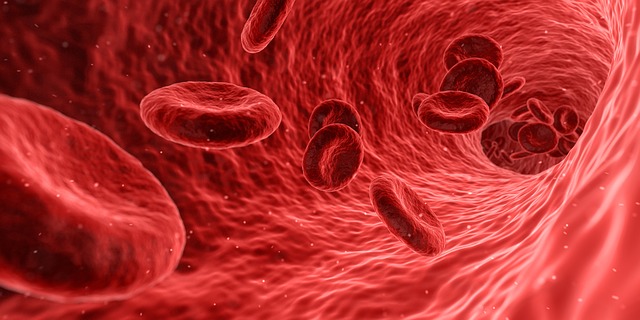Posts by OConnor
Blood Circulation and Sleep: The Vital Link
Increasing blood circulation can help you sleep better
Sleep is a regulated function of the brain. The brain controls your ability to fall asleep by limiting arousal signals; in essence, it is inhibiting activity in the parts of the brain which are responsible for wakefulness, causing the body to transition from the stable state of wakefulness to the stable state of rest. But how can we reasonably expect the brain to perform such a specialized function if it is starved of the ingredients it needs to function properly?
Why Chiropractic is Effective Pain Relief for Sciatica Sufferers
Sciatic nerve pain is not your friend
Sciatica is characterized by pain that begins in the lower back and radiates to the lower extremities. Symptoms are often experienced only in on leg and include: pain that begins in the lower back and radiates downward, as well as numbness and weakness in the legs and feet, But the important thing to remember is that sciatica is not a condition itself, but rather a symptom of another condition. The pain is most likely being caused by compression of the sciatic nerve, the largest nerve in the human body which runs from the lower spine through the buttock, the back of the thigh and all the way down to the foot. A compression at any point along the way can cause dysfunction, but it is most often impinged upon because of misalignment in the lower back.
Pressure Relief for Overburdened Spines
Positions that put the spine under the most pressure
Humans have a habit of putting their spines under pressure. Many of the most common positions that we assume throughout the day pressurize the spine, including:
- Leaning forward
- Lifting and bearing weight
- Sitting by itself
- Sitting and leaning forward
- Forward head posture
How many times do you perform each of these motions, consciously or not, each day? It is a credit to our spines that they are resilient enough to keep us healthy for any length of time given such consistent pressure. At OFW Chiropractic we believe it’s time to step up our level of awareness when it comes to how we treat our spines.
Embracing an Ergonomic Lifestyle
Ergonomic injuries are on the rise
The more people we bring into the white collar job market, the more we send down the road toward degeneration of the spine and disability. Ergonomics is an applied science that studies human efficiency as it relates to the surrounding environment. Few employers are ethical enough, or are willing to invest enough money, to lift the overall ergonomic standard of their offices. The onus is therefore upon the workers to optimize their own ergonomic situation. At OFW Chiropractic we have a plan to help you embrace a lifestyle that helps you avoid ergonomic injuries and prevent the onset of conditions that make lower back pain the number one workplace complaint.
Piriformis Syndrome: Pain Comes in Small Packages
Do you know your piriformis muscle?
The piriformis is a little-known muscle located deep in the buttock, near the gluteus maximus. Its primary function is to allow for rotation of the hip and turning of leg and foot outward. It is small, but its potential for pain is enormous because of its location, connecting the lower spine and upper femur. Running directly underneath this muscle is the sciatic nerve, a more well known part of the body that is responsible for sciatic nerve pain. In some people, the nerve will even run directly through the muscle.
The Dreaded Trigger Point
First of all, what is the myofascia?
We are glad you asked: it is a good thing to know about, since it covers you from head to toe. Fascia, or myofascia is the continuous, dense layer of tissue that covers every muscle and bone in your body without beginning or end. It covers the inside of your body like a superhero’s suit and it is designed with superhero strength: the fascia has a tensile strength of over 2,000 pounds. In its normal state, the fascia is soft and flexible; and it stretches and moves with your body throughout the day without your awareness. In fact, the only time we do become aware of our fascia is when it causes us pain…
Radiculopathy: Nerves Under Pressure
Radiculopathy is nerve compression
Modern medicine knows comparatively little about this irritating condition that occurs when nerves exiting the spinal cord are compressed. Symptoms of radiculopathy include:
- Pain and weakness in the affected area
- Referred pain in other parts of the body
- Feelings of tingling or numbness
- Weakness in the extremities
We most commonly detect radiculopathy in the lumbar and cervical segments of the spine, and the most common risk factors for radiculopathy include:
- Physically labor intensive jobs
- Tasks that involve repetitive trauma
- Overly-sedentary lifestyles
White Collar Back Pain
Office work has become the predominant source of back pain in the 21st century
The stats don’t lie: more than a million workers in the US are affected by back pain related complaints each year; and the umbrella category of back pain is responsible for more lost work hours than any other musculoskeletal complaint. While it may make more sense that nurses or construction workers suffer pain due to the demands of movement involved in their jobs, white collar workers face the opposite problem: the demand of no movement, which is proving to be just as insidious when it comes to the spine.
Back Pain and Breastfeeding
The last two words you want to hear when breastfeeding are: back pain
However, back pain is among the most common complaints among new mothers, regardless of whether they are breastfeeding or not. Simply adjusting to carrying the child, bending over to pick it up, and the lack of sleep associated with nursing is putting a strain on the back. This makes it all the more important that new mothers pay attention to proper body mechanics and breastfeeding techniques.
Chiropractic for Facet Joint Syndrome
Facet Joint Syndrome is a common cause of back pain
Joints are the structures that provide for motion and function at points where bone meets bone. The spine is composed of 24 presacral vertebrae in the human spine, and in between each is a spinal motion segment, or functional spinal unit that consists of the two vertebrae, an intervertebral disc, and the connection between the two vertebrae by way of two facet joints. The purpose of the facet joints within this unit is to provide for stable movement between vertebrae and to prevent injury from occurring due to excessive movement. In this way, facet joints are key spinal stabilizers. Facet Joint syndrome refers to injury of the facet joints, which can cause debilitating back pain, as well as swelling and inflammation
Facet Joint Syndrome characteristics
Each facet joint is encapsulated by a thin layer of hyaline cartilage and filled with synovial fluid that provides for lubrication. Facet Joint Syndrome refers to the acute injury or damage from repetitive trauma to the facet joints; it is most often a strain that results from excessive or aggressive movement. Quite often, the body responds with muscle spasm, a natural protective mechanism, that can limit range of motion and cause sharp, severe pain. Most cases of Facet Joint Syndrome will heal themselves in a matter of weeks, but chiropractic seeks to improve the body’s natural healing capacity while also preventing the likelihood of the injury recurring.
Chiropractic for Facet Joint Syndrome
Chiropractic seeks to restore joint function by aiding the body’s natural healing process. We begin with a comprehensive spinal exam including personal medical history to determine if your back is caused by FJS. From there, we move ahead with a multi-faceted plan that uses modalities including:
- Spinal adjustment to maintain spinal alignment and restore range of motion
- Decompression modalities including instrument-assisted and manual traction to rehydrate the spinal joints
- Recommendations on lifestyle adjustments to account for your injury.
If you suspect your back pain may be caused by Facet Joint Syndrome, give our office a call to schedule an appointment and start the healing process today.










